Biba, the brainchild of Polish-born Barbara Hulanicki, first opened its doors in London during the 1960s, quickly becoming one of the most iconic fashion brands of the era. Known for its chic, affordable designs, Biba offered an exciting blend of high fashion and accessibility. Hulanicki’s vision was clear: she wanted to make stylish clothing available to the masses, and she succeeded. What started as a small mail-order business selling affordable, celebrity-inspired dresses evolved into a global sensation, attracting legions of fashion-forward youth. By the time Biba opened its first physical store in Kensington in 1964, it had already cemented its place in the hearts of stylish Londoners.
The brand’s rapid rise culminated in the opening of its legendary flagship store, “Big Biba,” in 1973. Located in the sprawling Derry & Toms building on Kensington High Street, the department store was more than just a place to shop—it was a cultural phenomenon. Visitors could browse everything from clothing to furniture, all while being enveloped in the Art Deco-inspired décor that embodied Biba’s glamorous yet accessible aesthetic. Each floor had its own theme, offering a shopping experience that was both eclectic and immersive. Big Biba became a hotspot for celebrities and everyday shoppers alike, symbolizing the golden age of British retail.
Despite its initial success, financial difficulties led to the closure of Biba in 1975. However, the brand’s legacy has endured, thanks to multiple relaunches in the years that followed. Today, Biba remains a beloved name in fashion, with its original designs coveted by vintage collectors. The brand continues to evolve, with its modern iterations reflecting both its rich heritage and contemporary trends. Biba’s enduring influence on fashion, combined with its nostalgic charm, ensures that it remains a symbol of 1960s and 1970s style.
1970 Biba Store
How to tell if Biba is vintage from the logo
Biba, the iconic fashion brand from the 1960s, has undergone various transformations, with its logo being a key element in its evolving identity. The intricate, artistic designs of the original logo set the tone for the brand’s distinct aesthetic. Over the years, the logo has seen some modifications while maintaining a vintage allure, reflective of the brand’s continuing legacy. The following guide will help you identify vintage Biba items through logo variations from different eras.
Struggling to identify vintage tags or labels? Submit a picture on our vintage tag identification page, and we’ll help you out!
1960s to now Biba logo
- The original Biba logo from the 1960s is instantly recognizable by its highly decorative, art nouveau-inspired design.
- This logo uses intricate, intertwining lines, with a distinctively bold and complex gold pattern.
- The text “BIBA” is placed beneath the decorative element, with a unique font that complements the elaborate design above.
- This logo is iconic for its association with the brand’s original boom in the 1960s and early 70s, becoming a symbol of glamour and luxury.
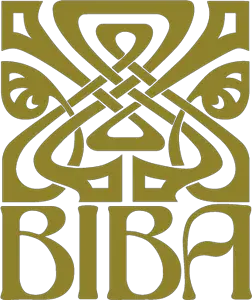
1960s to now Biba logo
1990s Biba logo
- The Biba logo in the 1990s took on a cleaner, more streamlined appearance.
- The decorative top part of the logo is removed, leaving only the stylized “BIBA” text.
- The font is more simplified, using bold red letters, with a unique flourish on the letter ‘A’ that adds a subtle design element.
- This version marks Biba’s resurgence in the 1990s, and it reflects a more minimalist, modern approach compared to the original logo.

1990s Biba logo
How to tell if Biba is vintage from the tags
Biba, a renowned British fashion brand founded in the 1960s, has evolved significantly over the decades. Each era of Biba’s clothing features distinct tags that reflect the trends and designs of that time, from the bold and iconic logos of the early years to more modernized versions in recent decades. These tags offer valuable clues to determine the vintage status of Biba garments. Below is a guide to help identify the vintage of Biba pieces based on their tags, categorized by decade.
1960s vintage Biba tags
- Original Biba logo with a simple, bold design.
- Tags often feature a large, stylized “Biba” font in gold or light colors on darker backgrounds.
- The overall look is minimalist, reflecting the 1960s aesthetic of Biba’s early collections.
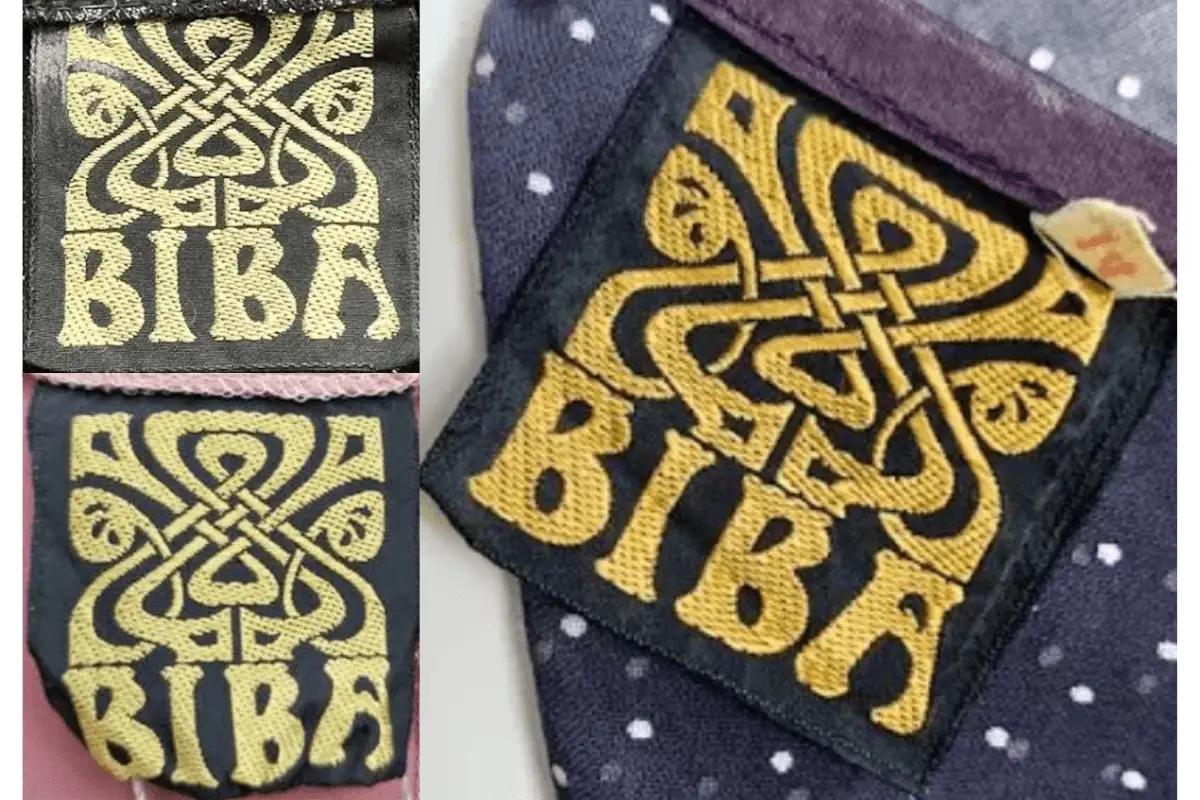
1960s Biba tags
1970s vintage Biba tags
- Biba’s iconic Art Nouveau-inspired logo becomes prominent.
- Tags often have intricate, Celtic-inspired designs with bold lines and curves.
- The “Biba” lettering is large and central, often accompanied by decorative elements in gold or light thread on darker fabrics.
- Color schemes of black and gold are commonly seen, creating a luxurious and opulent feel.
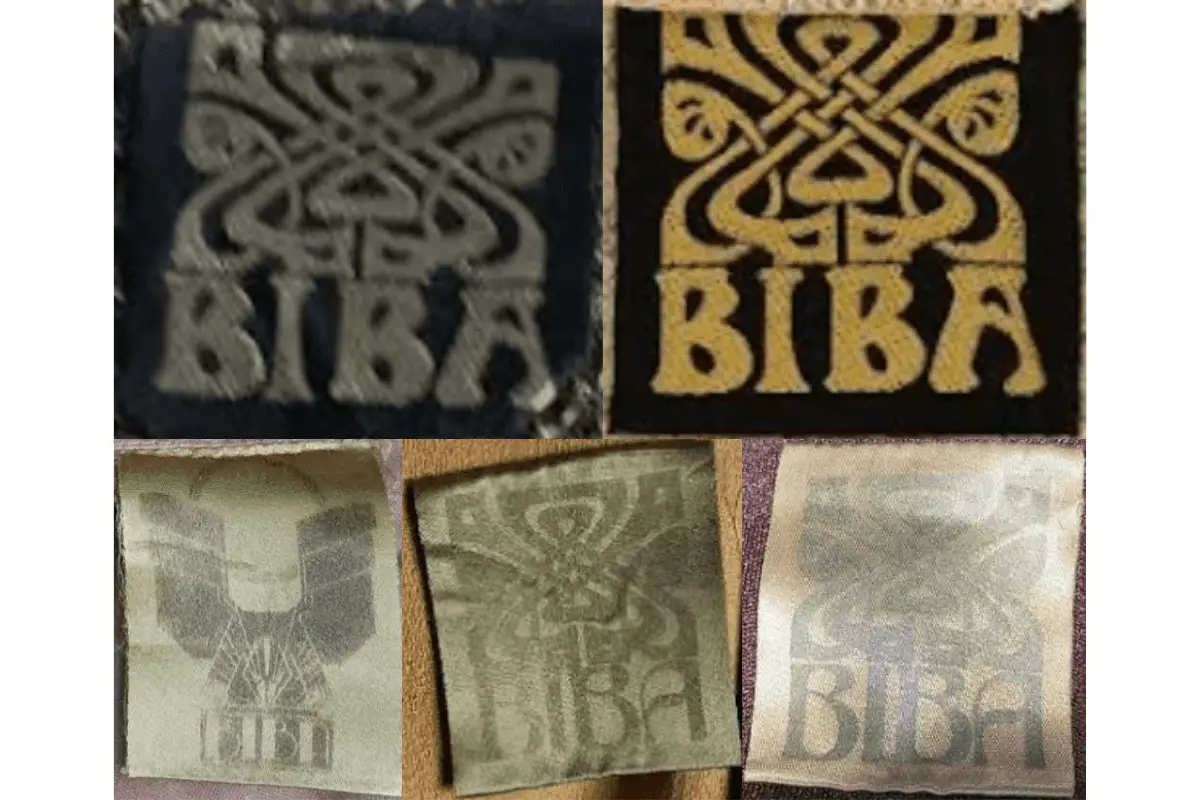
1970s Biba tags
1980s vintage Biba tags
- Continued use of the Art Nouveau style logo, but with a modern twist.
- The logo is often embroidered, with more vibrant or contrasting colors like gold on black.
- Tags from this era are typically larger, reflecting the bold fashion of the 1980s.
- The tags often feature a highly detailed design, emphasizing the brand’s heritage.
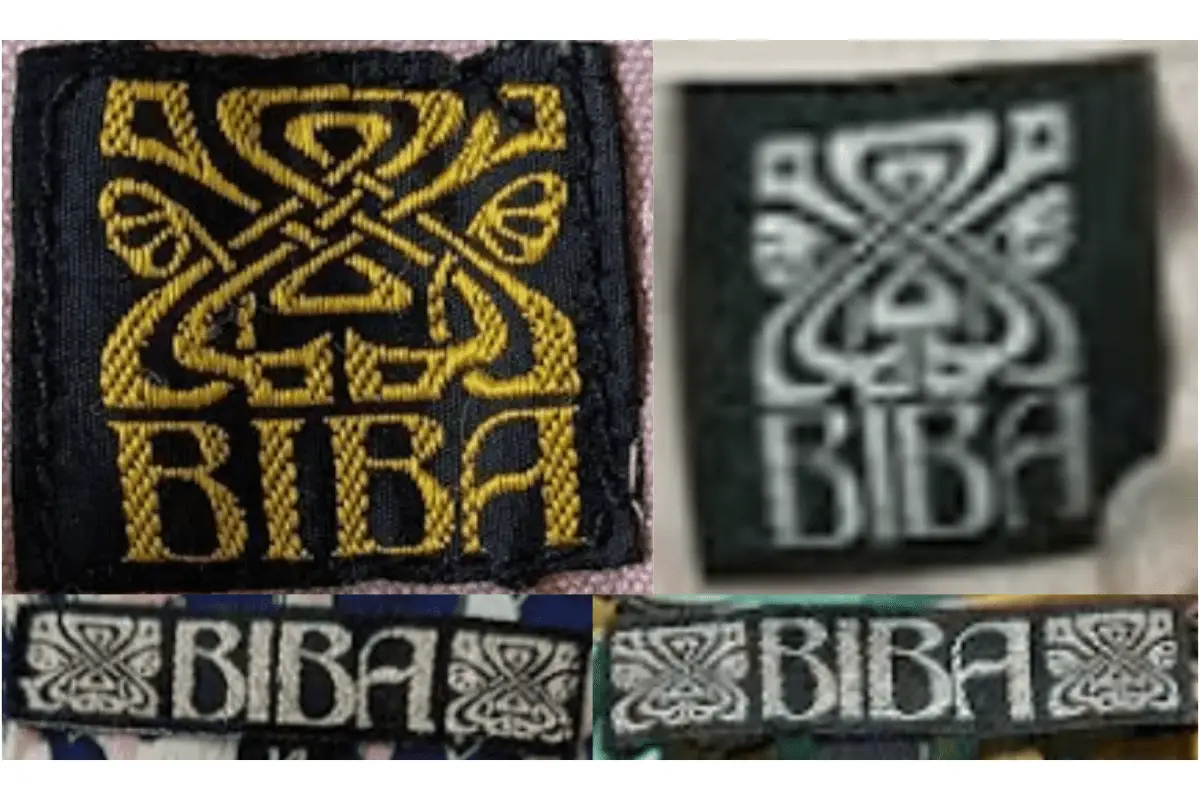
1980s Biba tags
1990s vintage Biba tags
- Return to a simpler, more streamlined logo design while retaining the iconic emblem.
- Tags are typically rectangular with bold, clean fonts, using more neutral colors.
- In some cases, the intricate designs are toned down, reflecting the minimalistic fashion trends of the 1990s.
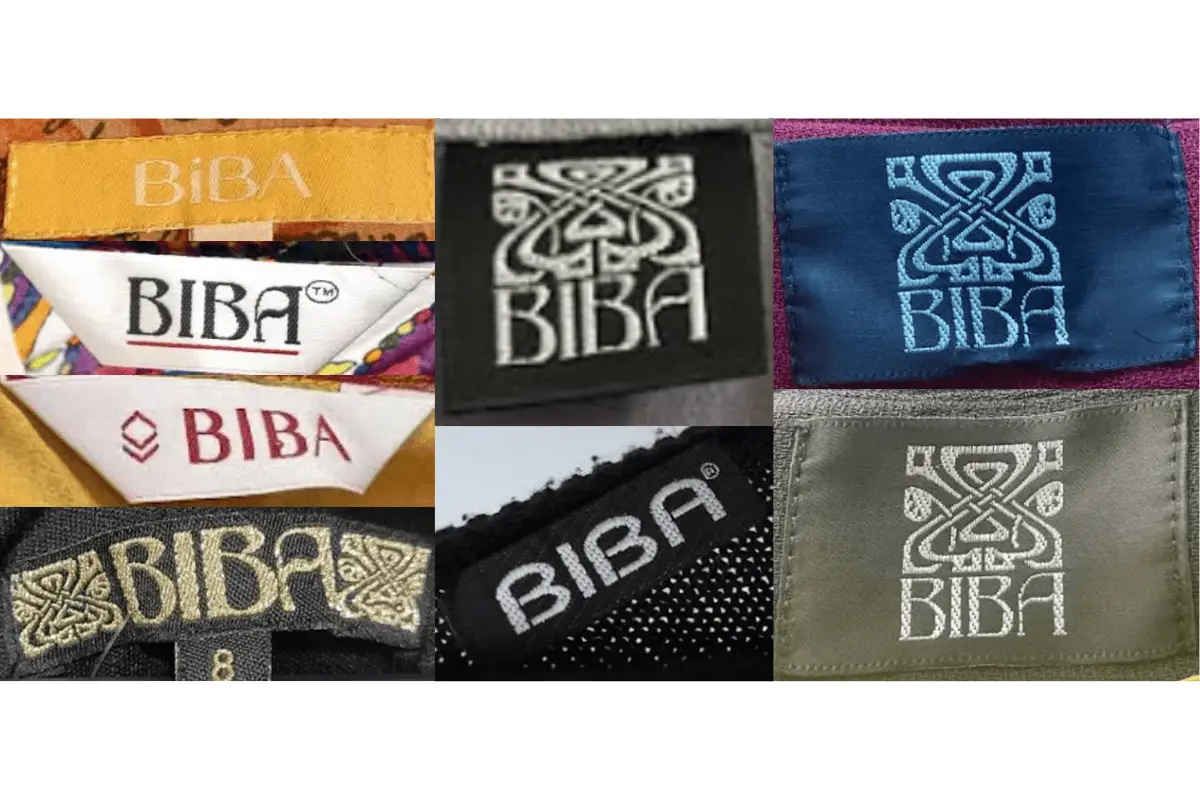
1990s Biba tags
2000s vintage Biba tags
- Revival of Biba’s heritage with a modern twist on the classic logo.
- Tags from this era often feature more contemporary fonts alongside the Art Nouveau logo.
- More use of color variations, with gold and silver tones on both black and colored backgrounds.
- Loop tags start to appear, adding a more modern finish to garments.
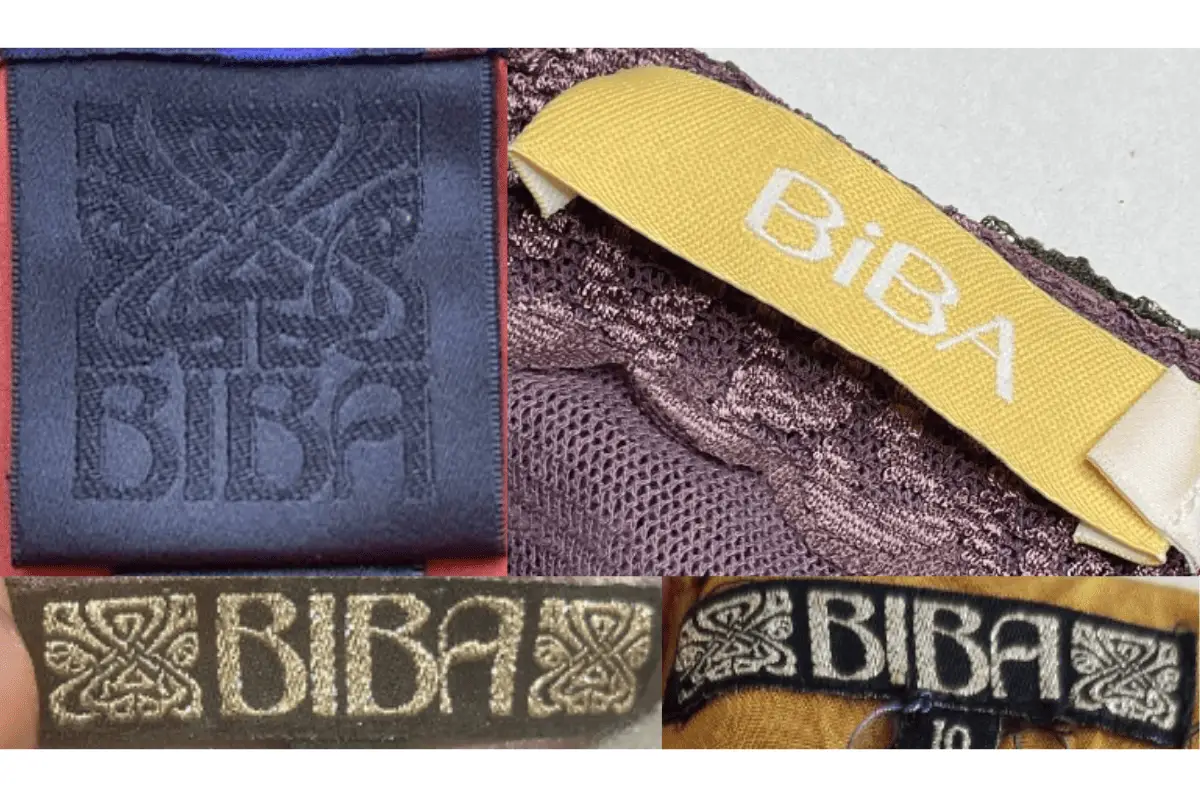
2000s Biba tags
2010s vintage Biba tags
- Continuation of the classic Biba logo with subtle updates to fit modern fashion trends.
- Tags feature more diversity in materials and colors, moving beyond the traditional black and gold scheme.
- Some tags feature a sleeker, more modern typeface, with simplified designs accompanying the classic logo.
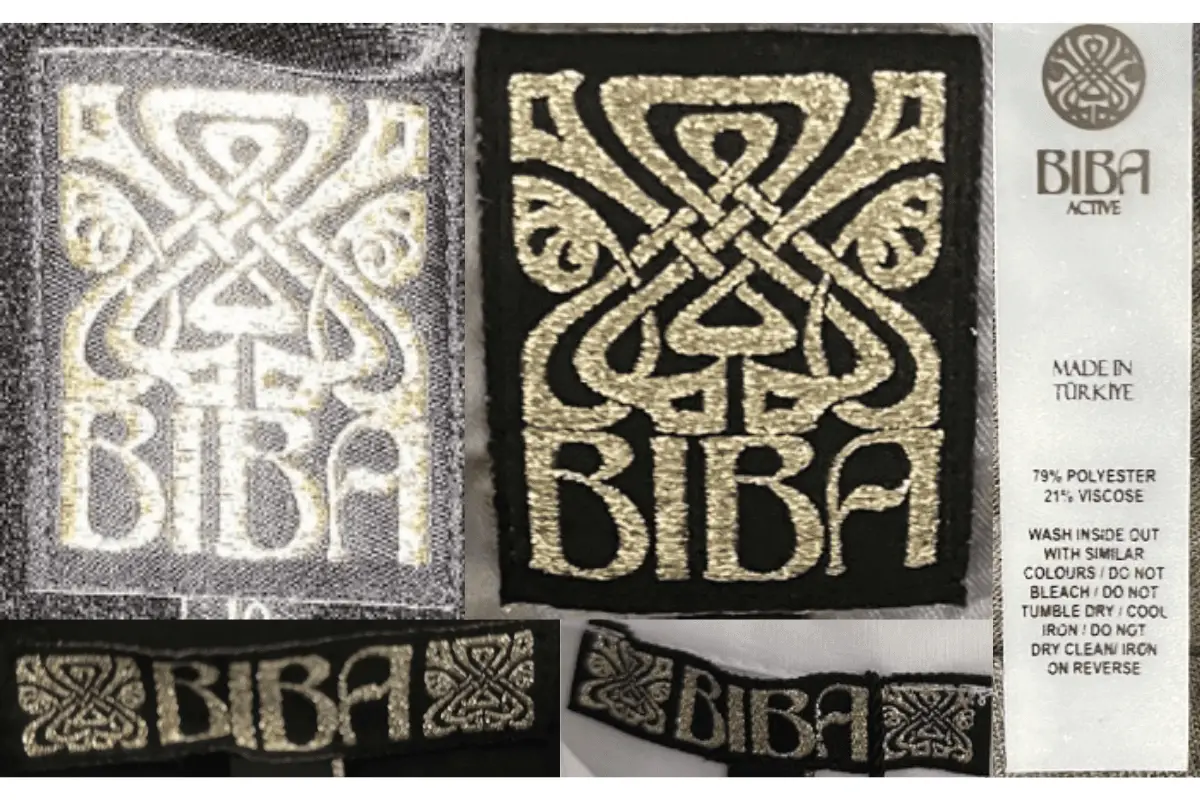
2010s Biba tags



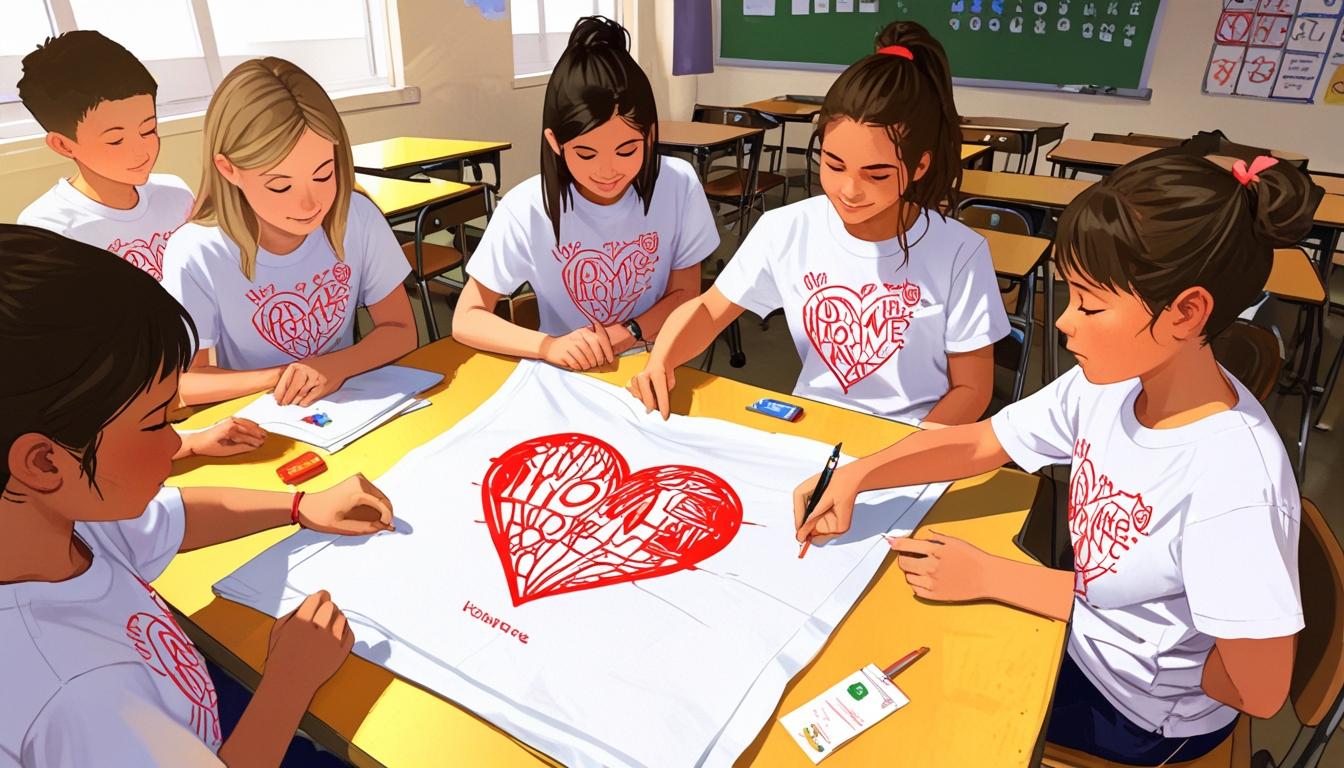
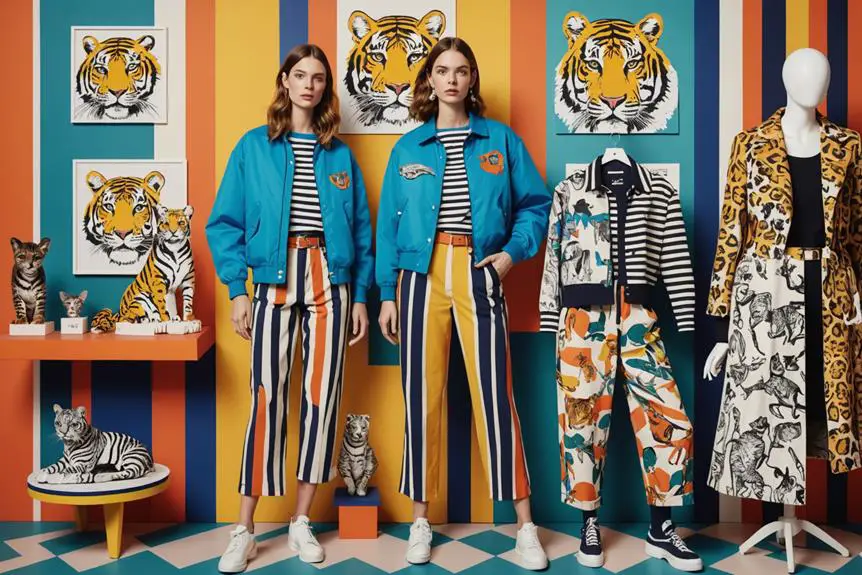
I don’t think the title of your article matches the content lol. Just kidding, mainly because I had some doubts after reading the article.
Your point of view caught my eye and was very interesting. Thanks. I have a question for you.